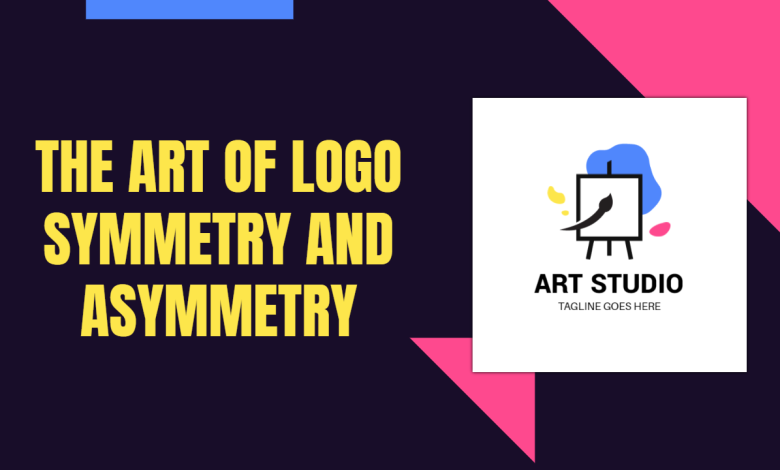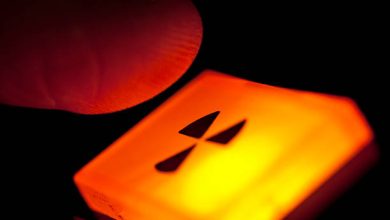The Art of Logo Symmetry and Asymmetry: Striking a Balance in Design

In the ever-evolving landscape of brand identity, logos stand as visual ambassadors, representing the essence and values of a company. Among the myriad choices in logo design created using logo maker, the decision between symmetry and asymmetry holds significant weight. This article delves into the intricacies of logo design, exploring the art of logo symmetry and asymmetry.
The Power of Symmetry in Logos
Symmetry, with its balanced and predictable design, has long been a staple in logo creation. The visual equilibrium it offers communicates stability, trust, and simplicity, making it a preferred choice for numerous successful brands. Notable examples include Apple and Toyota, whose symmetrical logos convey reliability and precision, contributing to their global recognition.
Symmetrical logos carry advantages beyond aesthetics. They often translate well across different mediums, ensuring consistency in the brand’s representation. The harmonious composition resonates with audiences, instilling a sense of order and dependability.
Breaking the Mold: Asymmetry in Logo Design
Contrastingly, asymmetry injects a dose of dynamism into logo design, breaking away from the conventional and predictable. Brands like Nike and Pepsi have embraced asymmetrical logos, leveraging the energy and uniqueness they bring to stand out in competitive markets.
Asymmetry allows for creative expression, enabling designers to craft logos that are distinctive and memorable. The absence of strict balance opens doors to innovation, making asymmetrical logos particularly appealing to brands aiming to convey a sense of modernity and forward-thinking.
Balancing Act: Choosing Between Symmetry and Asymmetry
When deciding on a logo design, several factors come into play. Industry norms, target audience preferences, and the brand’s personality all influence the choice between symmetry and asymmetry. Striking a balance that aligns with the brand’s identity and resonates with the target demographic is essential for a successful logo.
For example, a tech company aiming for a sleek and reliable image may lean towards symmetry, while a creative agency looking to showcase innovation and originality might opt for asymmetry. The key is to ensure that the chosen design effectively communicates the brand’s message while capturing the attention of the intended audience.
Creating Symmetrical Logos: Tips and Tricks
Designing symmetrical logos requires careful consideration of proportions and visual elements. Here are some tips to ensure a harmonious symmetrical design:
- Maintain Proportional Balance: Ensure that elements on one side of the logo mirror those on the other, creating a visually pleasing equilibrium.
- Simplicity is Key: Keep the design clean and simple to enhance recognizability. Avoid clutter, allowing the symmetry to shine through.
- Color Harmony: Pay attention to color choices, ensuring that they complement each other and contribute to the overall balance of the design.
- Versatility: Design with versatility in mind, ensuring the logo remains impactful whether scaled down for a business card or enlarged for a billboard.
Unleashing Creativity with Asymmetrical Designs
Asymmetrical logos provide a canvas for artistic freedom. Here are considerations for creating compelling asymmetrical designs:
- Dynamic Composition: Embrace the dynamism that asymmetry offers. Experiment with varied shapes, sizes, and placements to create a visually engaging composition.
- Expressing Brand Personality: Use asymmetry to convey the brand’s personality and values. Bold and unconventional designs can signal innovation and a willingness to push boundaries.
- Balancing Act: Despite the lack of symmetry, strive for visual balance. Distribute elements strategically to maintain a cohesive and aesthetically pleasing design.
- Adaptability: Like symmetrical logos, ensure that asymmetrical designs remain effective across different platforms and sizes.
Case Studies: Symmetry vs. Asymmetry
Analyzing real-world examples provides valuable insights into the impact of design and art of logo symmetry and asymmetry choices on brand identity:
Symmetry Case Study: Apple
Apple’s iconic bitten apple logo exemplifies the power of symmetry. The clean lines and precisely mirrored elements create a logo that exudes simplicity and elegance. The symmetrical design aligns with Apple’s commitment to sleek and reliable technology, contributing to the brand’s global success.
Asymmetry Case Study: Nike
Nike’s swoosh logo is a prime example of the energy and movement that asymmetry can convey. The dynamic, asymmetric design symbolizes motion and progress, aligning perfectly with Nike’s brand ethos of athleticism and innovation. The logo’s simplicity and boldness have contributed significantly to Nike’s brand recognition.
Adapting Logos for Different Platforms
In the digital age, logos must seamlessly transition across various mediums, from business cards to social media banners. Ensuring adaptability is crucial for maintaining a consistent brand image. Consider the following when adapting logos:
- Scalability: Design logos to scale well across different sizes without losing clarity or impact.
- Color Consistency: Maintain consistent color profiles to ensure logos look uniform across print and digital platforms.
- Responsive Design: Optimize logos for responsive design, ensuring they appear well on different devices and screen sizes.
The Psychological Aspect of Symmetry and Asymmetry
Understanding the psychological impact of design choices is vital for crafting logos that resonate with the target audience:
- Symmetry and Stability: Symmetrical designs often evoke a sense of stability and order, appealing to audiences seeking reliability and trustworthiness.
- Asymmetry and Creativity: Asymmetrical designs, on the other hand, tap into the human desire for novelty and creativity. They can be particularly appealing to audiences looking for innovation and uniqueness.
Future Trends in Logo Design
As design trends continue to evolve, staying ahead of the curve is essential for maintaining a modern and relevant brand image. Consider the following trends shaping the future of logo design:
- Minimalism: Embracing simplicity and minimalistic designs continues to be a prevalent trend in logo creation.
- Geometric Patterns: The use of geometric shapes and patterns adds a contemporary and structured aesthetic to logos.
- Custom Typography: Unique and custom typography is gaining popularity, allowing brands to stand out through distinctive lettering.
- Adaptive Logos: Logos designed to adapt to different contexts and platforms are becoming increasingly important for brand versatility.
Ensuring SEO-Friendly Logos
Incorporating SEO strategies into logo design enhances brand visibility online:
- Optimized Image Descriptions: Include relevant keywords in image descriptions and alt text to improve search engine discoverability.
- Responsive Design: Logos that display well on various devices contribute to a positive user experience, indirectly impacting SEO.
Measuring Logo Effectiveness: Metrics and Analytics
Tracking key performance indicators (KPIs) is essential for assessing the impact of a logo:
- Brand Recognition: Measure how easily the logo is recognized by your target audience.
- Engagement: Track the level of audience engagement with your logo across different platforms.
- Consistency: Ensure that the logo is consistently used across all brand communications.
Case Studies: Successful Logo Revamps
Examining brands that underwent successful logo revamps offers valuable insights into the transformative power of strategic design changes:
Starbucks
Starbucks’ evolution from a detailed, intricate logo to a simplified, iconic green siren demonstrates the impact of a strategic revamp. The streamlined design enhanced brand recognizability and adaptability across various mediums, contributing to Starbucks’ continued global success.
Mastercard
Mastercard’s recent logo update involved simplifying the iconic overlapping circles. This subtle change not only modernized the logo but also improved visibility across digital platforms, showcasing the importance of adapting to changing design trends.
Now, that we’ve explored the art of logo symmetry and asymmetry, let’s jump to the conclusion.
Conclusion
In conclusion, the art of logo design is a multifaceted journey that goes beyond aesthetics. Whether opting for symmetry or embracing asymmetry, the key is to align the design with the brand’s values and goals. As trends evolve and consumer preferences change, viewing logo design as an ever-evolving aspect of brand identity is crucial. By striking a harmonious balance between tradition and innovation, brands can create logos that not only capture attention but also leave a lasting impression on their audience.
FAQs
How often should a brand consider updating its logo?
Logo updates depend on various factors, including industry trends and brand evolution. A significant change in the company’s direction or image may warrant a logo refresh every 5-10 years.
Can a small business create a professional-looking logo without hiring a designer?
Yes, many online tools and resources cater to small businesses, allowing them to create professional-looking logos. However, careful attention to design principles is crucial.
What role does color play in logo design?
Color significantly influences brand perception. Different colors evoke specific emotions and associations, making color selection a critical aspect of logo design.
How can a brand ensure its logo remains timeless?
Timeless logos often focus on simplicity and avoid trends that may quickly become outdated. Striking a balance between contemporary design and timeless elements is key.
Is it essential for a logo to convey the entire brand story?
While a logo should reflect the brand’s essence, it doesn’t need to tell the entire story. Instead, it serves as a visual cue that sparks curiosity and recognition.
Also, read:
Restoring Glory: A Step-by-Step Guide to Roof Restoration




